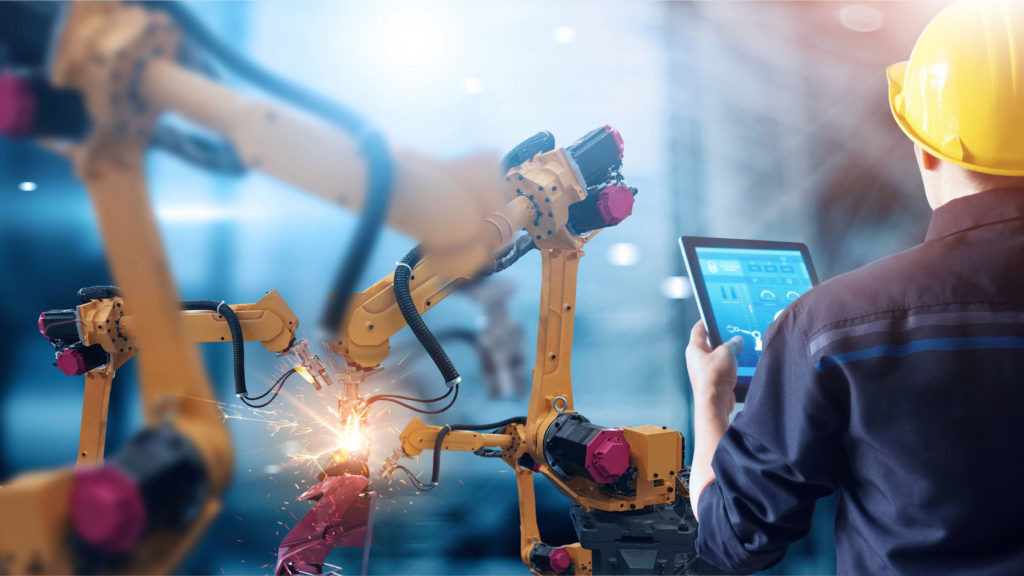Now, more than ever before, industrial enterprises need to be flexible and agile. As the world settles into the new normal, businesses are looking to intelligence from within their automation to stay competitive. Andy Graham, Solutions Manager at SolutionsPT explains.
To achieve this, manufacturers need connected technology that enhances every facet of the business, all the way from the Edge to Enterprise.
That intelligence comes from data. The umbrella of digital transformation covers many technologies from smart sensors, cloud and edge computing, to big data analytics.
All of these elements bring new capabilities to industrial operations, and it is up to managers to bring them all together into an Edge to Enterprise approach to empower workers and decision makers and enable more informed operations.
What is Edge to Enterprise connectivity?
With the right software, manufacturers can design a system that creates flexibility, efficiency and transparency for the entire workforce. By joining the Human Machine Interface (HMI) with SCADA software, applications such as cloud-driven remote edge management, IIoT architectures and multi-site control can act as inter-linked components within the platform, allowing for deep contextualisation of data from the application edge for real time decision making, all the way to the enterprise for strategic decision making.
Selecting software with strong integration by design increases the ease with which data can be contextualised, presented and acted upon. This is true for single facility operations as well as manufacturers with multiple sites. The need for this connectivity only grows in importance when considering sectors like water/wastewater or oil and gas that often see high-cost critical assets located at remote sites.
An Edge to Enterprise approach also enables organisations to open certain data to third parties within the supply chain as well as trusted vendors and machine builders. With information presented in an easy to read format, making use of the abundance of data being collected by IIoT devices, stock or raw material levels can be viewed in real time, while machine performance can be tracked closely to enable predictive and preventive maintenance to be scheduled before issues affect efficiency.
As industrial operations often have operators in in different locations, it’s important this visualisation is cross-platform compatible so that it can be viewed on any device from desktops to tablets, to mobile phones.
What benefits does connectivity bring?
An Edge to Enterprise connectivity approach shifts operators and managers from a reactive, problem solving to a proactive, problem finding and avoidance approach that improves uptime and enables continuous improvement. By making sense of the ever-growing mountain of data available in industrial environments, operators are alerted to issues before they happen.
They avoid machine failure with planned maintenance and have the replacement parts ready rather than scrambling to identify the cause of faults and order parts after a critical asset breaks. With the latest connectivity and virtual dashboards, this vital information can be securely shared with those on premise, on the road or at the asset location.
With the right computing platform and software in place managers can rest assured knowing the workforce is working from a single truth, a digital thread that runs through all operations.
Gone are the days of filling paper reports or manually logging a production failure after the fact, these methods aren’t viable for a modern industrial enterprise. It’s not enough to know that a failure happened, you need to know why, and more importantly how, it happened to ensure it doesn’t happen again.
The New Normal
The pandemic has effected all aspects of industry, even as a sector that carried on working throughout. For most it has been a driver of digital transformation, deploying new technologies to rise to the challenges of COVID-19 and remain competitive. For others it has been a reason to slow operations and pull back from deploying new technologies that may affect the bottom line.
Both of these approaches can benefit from an Edge to Enterprise approach without costly risks. One of the main advantages to this level of connectivity is the scalability of its features; scalability that can be applied in hardware and software if managers deal with a vendor that offers platform-agnostic capabilities.
This guarantees complete enterprise-wide flexibility, whether you are adding new production lines, adapting to a remote workforce or opening a new facility all together. An Edge to Enterprise approach lets businesses start small and grow as their needs and requirements develop.
The power of an Edge to Enterprise approach is not the individual parts, but the sum of them. The human workforce can be more connected than ever, all working from the same digital thread and bringing together data that was previously disparate.
Managers can interpret the visualised data and scale up or down to fit individual needs. Workers are empowered through new insight and information silos are broken down leading to true digital transformation in practice.
